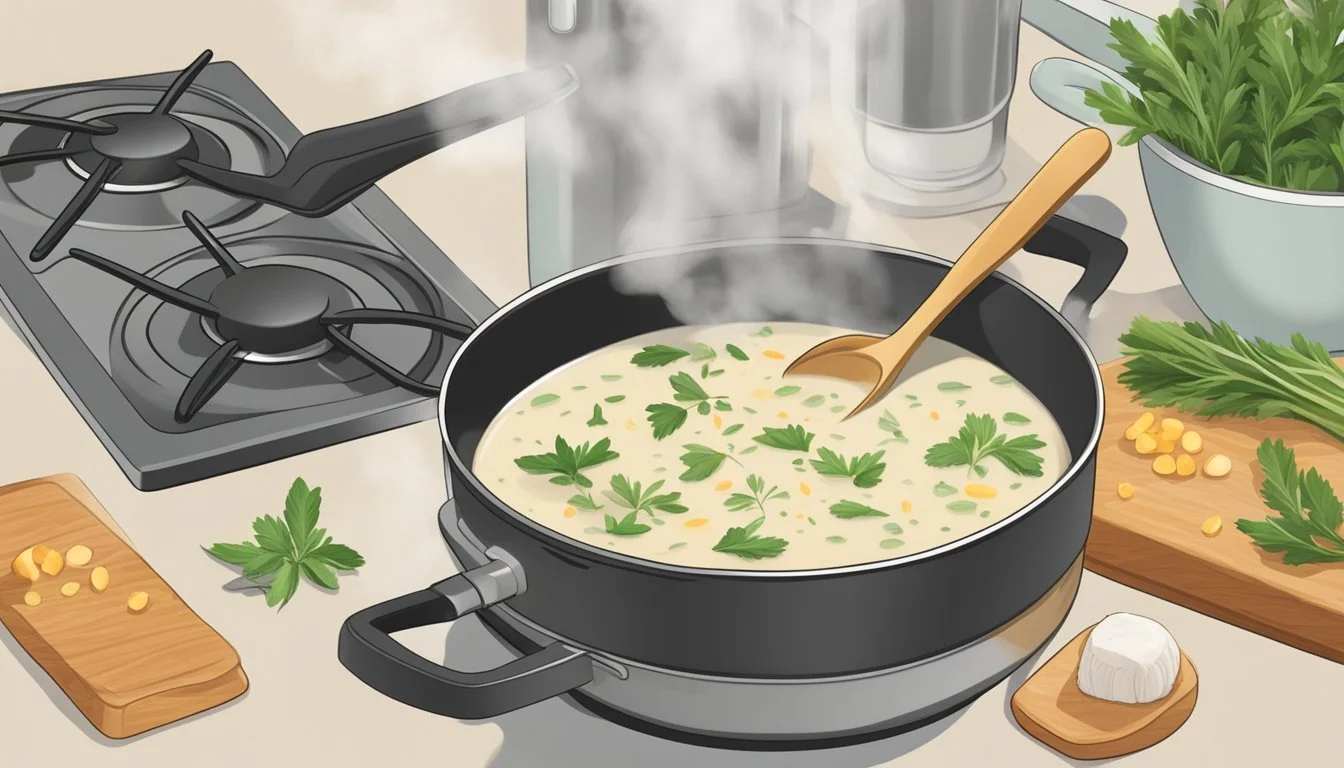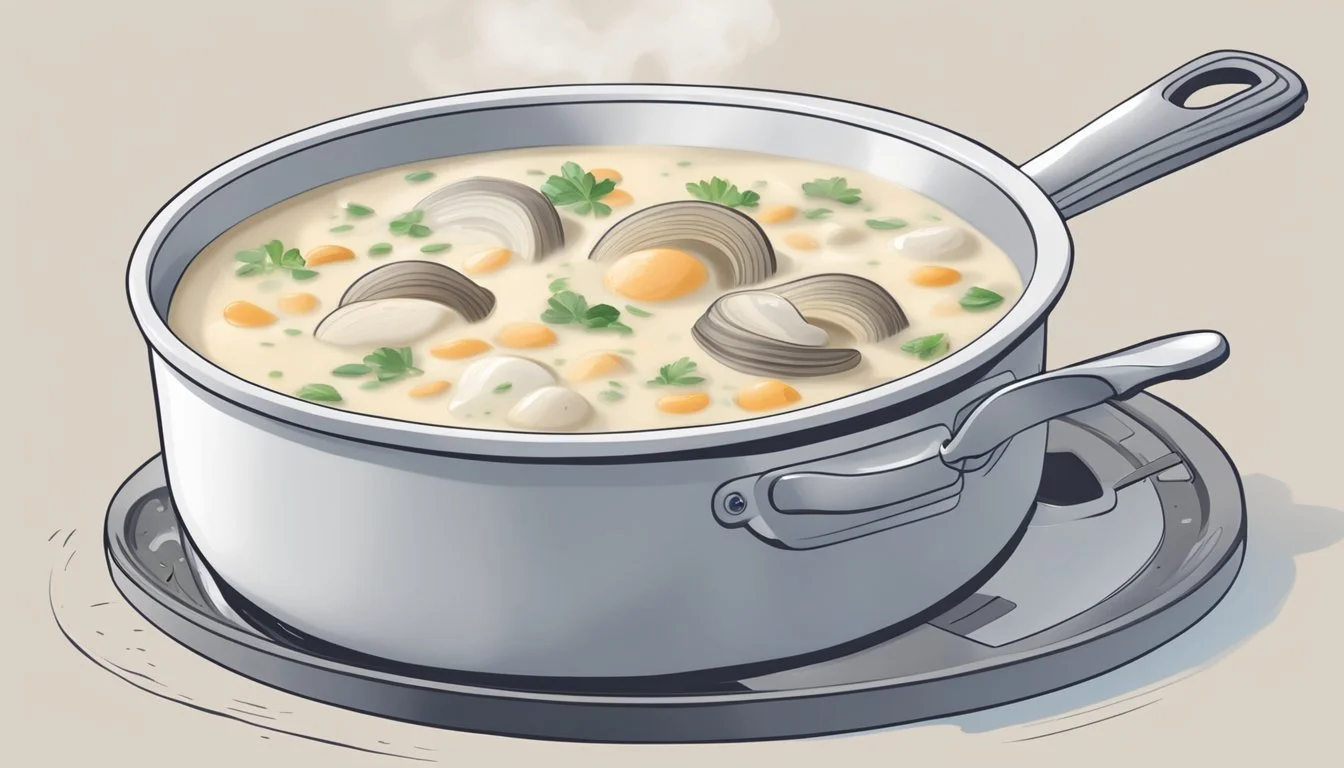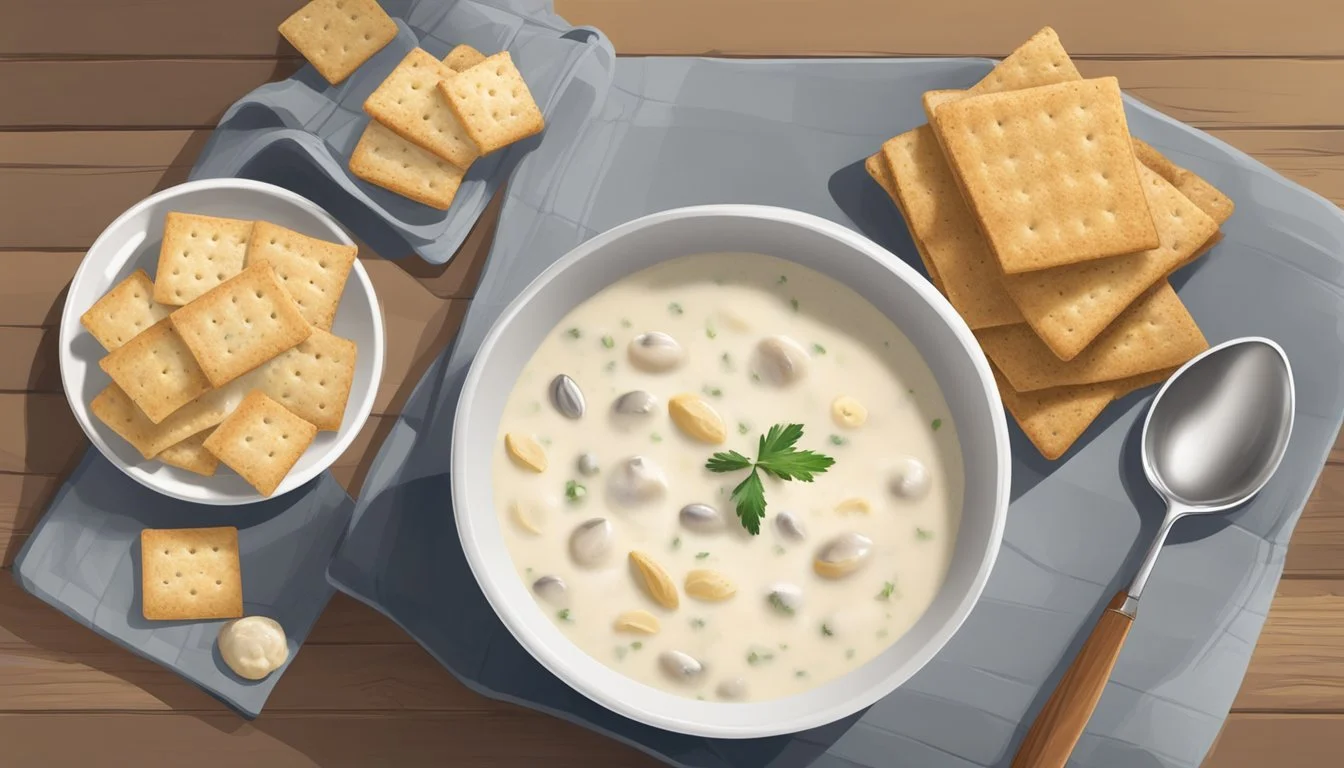How to Reheat Gluten-Free Clam Chowder for Optimal Flavor
Gluten-free clam chowder is a beloved comfort food, perfect for a cozy night in or sharing with loved ones. When it comes to reheating this hearty dish, achieving that same rich, creamy flavor can be a bit tricky. The best way to reheat gluten-free clam chowder is on the stovetop over low heat, stirring frequently to ensure even heating and to avoid scorching.
Using the stovetop method not only retains the soup's original flavors but also allows the ingredients to meld together harmoniously once more. For the best results, pour the clam chowder into a saucepan and heat it slowly, stirring often. This method helps to maintain the chowder's creamy texture, making it just as delicious as when it was first made.
By following this reheating technique, you can savor the comforting flavors of gluten-free clam chowder without compromising its taste or texture. This straightforward approach ensures that your next bowl of chowder is just as delightful as the first.
Understanding Gluten-Free Clam Chowder
Gluten-free clam chowder can be made with various substitutions for traditional ingredients to maintain texture, flavor, and nutritional benefits. Ensuring that the dish remains flavorful and satisfying without gluten is key.
Ingredients and Substitutions
Clams: Fresh or canned clams produce the desired flavor profile. Clam juice from the canned clams can be used to enhance the soup’s taste.
Potatoes: Yukon gold potatoes are recommended for their creamy texture.
Cream and Milk: Heavy cream and milk are standard ingredients. Dairy-free options like coconut milk or almond milk work well for those avoiding dairy.
Onions, Celery, Garlic: Essential for building the base flavor. They should be finely chopped and sautéed in olive oil.
Bacon: Adds a smoky depth. For a vegetarian version, it can be omitted or replaced with smoked paprika.
Broth: Chicken or vegetable stock is typically used, enhancing both flavor and nutritional value.
Gluten-Free Thickening Methods
Traditional clam chowder uses a roux made from flour and fat. For gluten-free versions:
Cornstarch Slurry: Mix cornstarch with cold water or milk to create a slurry. Add this to the chowder to thicken it without adding gluten.
All-Purpose Gluten-Free Flour: This can be used similarly to wheat flour to create a roux.
Rice Flour: It’s another alternative, providing a smooth texture when mixed with fat.
Coconut Milk: Not only dairy-free but also naturally thick, adding richness and body to the chowder.
These methods ensure that the chowder remains thick and creamy, without compromising its gluten-free standing.
Health Benefits
Clams: Rich in protein and iron, providing essential nutrients.
Vegetables: Potatoes, celery, and onions add fiber, vitamins, and minerals.
Gluten-Free Ingredients: These make it suitable for individuals with gluten intolerance or celiac disease, allowing them to enjoy a comforting meal without adverse effects.
Dairy-Free Options: When using coconut milk or almond milk, the dish is lower in saturated fat and suitable for those avoiding dairy.
Taken as a whole, gluten-free clam chowder is not only accessible for those with dietary restrictions but also a nutritious and delicious meal option.
Pre-Reheating Preparation
Ensure gluten-free clam chowder retains its texture and flavor by properly storing leftovers and correctly thawing frozen chowder.
Proper Storage Techniques
Proper storage begins with cooling leftover chowder quickly. Transfer the hot chowder to shallow containers to speed up the cooling process. Place the containers in the refrigerator within two hours to prevent bacterial growth.
For freezing, use airtight containers or freezer-safe bags. Label with the date to keep track of storage times. Avoid overfilling containers; leave some space for liquid expansion. When stored correctly, clam chowder can stay fresh in the freezer for up to three months.
Thawing Frozen Clam Chowder
Thawing frozen clam chowder is best done in the refrigerator. Transfer the frozen container from the freezer to the fridge 24 hours before reheating. This slow thawing method ensures even temperature distribution and helps maintain the chowder’s creamy consistency.
If you need a quicker method, use the defrost setting on a microwave. Place the chowder in a microwave-safe dish, setting the microwave to the defrost mode and checking periodically. Stirring occasionally helps distribute the heat evenly.
Avoid room temperature thawing as it promotes bacterial growth. Properly thawed chowder reheats more evenly and retains its original flavor and texture.
Reheating Methods
Reheating gluten-free clam chowder can preserve its flavors and texture if done correctly. The following methods provide step-by-step instructions to achieve the best results using a stovetop, microwave, oven, or slow cooker.
Stovetop Reheating
Using the stovetop is an effective way to reheat gluten-free clam chowder. Begin by placing a saucepan over low heat. Pour the clam chowder into the pan and stir frequently to prevent scorching.
Covering the saucepan with a lid helps retain moisture and ensures even heating. Keep the heat low and allow the soup to simmer until thoroughly warmed. This method maintains the original taste and texture of the chowder.
Microwave Reheating
For a quicker option, reheating in the microwave is convenient. Place the clam chowder in a microwave-safe dish. Cover the dish with a microwave-safe lid or plastic wrap, leaving a small vent for steam to escape.
Heat on medium power for 1-2 minutes, stirring halfway through to ensure even heating. If the chowder isn't warm enough, continue heating in 30-second intervals, stirring each time. This method is easy and time-efficient but may require careful monitoring to avoid overcooking.
Oven Reheating
Reheating in the oven provides a gentle and even heat distribution. Preheat the oven to 325°F (163°C). Transfer the clam chowder to an oven-safe dish and cover it with foil or a lid to conserve moisture.
Place the dish in the oven and heat for about 20-30 minutes, checking occasionally and stirring to ensure even warming. This method is slower but helps retain the creamy texture and flavor of the chowder.
Using a Slow Cooker or Instant Pot
Reheating gluten-free clam chowder in a slow cooker or Instant Pot is ideal for retaining flavor and texture. Transfer the chowder to the inner pot of the device. Set the cooker to the "low" or "keep warm" setting.
Allow the chowder to reheat slowly, which can take around 1-2 hours. This method prevents overheating and keeps the clams tender. Stir occasionally to ensure even heating. This option is perfect for those who prefer a hands-off approach to reheating.
Maintaining Quality and Flavor
Properly reheating gluten-free clam chowder is essential to preserving its rich flavors and creamy texture. It's important to avoid common mistakes that can result in overcooked chowder or bland taste, and to make small adjustments to refresh its seasonings.
Avoiding Common Reheating Mistakes
Reheating gluten-free clam chowder can be tricky because its delicate ingredients, like clams and cream, are prone to overcooking. Using the stovetop method on low heat is ideal. Pour the chowder into a saucepan and stir frequently to prevent scorching and ensure even heating. Avoid using high heat as it can cause the dairy to separate and the clams to become rubbery.
Slowly heating the chowder allows the flavors to meld beautifully without breaking down the texture. Ensure the chowder simmers gently and avoid bringing it to a full boil. This prevents overcooking while allowing the natural flavors to come through.
Enhancing Flavor After Reheating
Reheated chowder may sometimes need a flavor boost. Seasoning adjustments can refresh the taste. Adding a small amount of fresh parsley or thyme can enhance herbaceous notes. A dollop of butter stirred in at the end can add richness and depth.
A pinch of black pepper or a dash of hot sauce can introduce a pleasing spice element. Bay leaves used during reheating may also infuse a subtle, earthy flavor. Adjusting the salt level helps bring out the natural clam flavor without overpowering it. For an enhanced taste experience, consider a light garnish of fresh herbs right before serving.
Serving Suggestions
Reheating gluten-free clam chowder can be made more enjoyable with the right accompaniments and presentation. Enhancing the dining experience involves pairing with complementary sides and using visually appealing presentation techniques.
Accompaniments and Pairings
To complement the rich and savory flavors of clam chowder, consider offering various sides and accompaniments. Gluten-free breadsticks or garlic knots are excellent choices, providing a chewy texture that contrasts with the creamy soup. Family-style serving can include a platter of assorted cheeses or a simple mixed green salad with a light vinaigrette.
For extra flavor, top the chowder with crisp bacon bits or a sprinkle of fresh chives. These garnishes add a pop of color and enhance the overall taste without overpowering the chowder. If you prefer a heartier meal, roasted vegetables or a side of grilled shrimp can be satisfying options.
Presentation Techniques
Effective presentation can elevate a humble bowl of chowder. Serve it in warm soup bowls to maintain its temperature. For an elegant touch, consider using bread bowls made from gluten-free bread. This not only looks appealing but also adds an edible element to the dish.
Individual servings can be garnished with a swirl of heavy cream or a few whole clams placed on top. Scatter chopped parsley or chives to add a fresh, green hue. For a family gathering, presenting the chowder in a large ceramic soup tureen allows for communal serving, creating a cozy and inviting atmosphere.
Beyond Clam Chowder
Exploring gluten-free soup recipes offers variety and nutritious options for those with dietary restrictions. Additionally, using clam chowder creatively can enhance other dishes.
Alternative Gluten-Free Soup Recipes
White Chicken Chili: This hearty soup is a great gluten-free option. It combines shredded chicken, white beans, green chilies, and a blend of spices in a flavorful chicken broth. Serve with a dollop of sour cream and a sprinkle of fresh cilantro.
Sweet Potato Stew: Packed with nutrients, sweet potato stew includes sweet potatoes, bell peppers, tomatoes, and spinach, all simmered in a rich vegetable broth. Add a dash of cumin and paprika for a bit of heat and depth of flavor.
Stuffed Pepper Soup: Combining the flavors of stuffed peppers into a soup, this dish features ground beef or turkey, diced bell peppers, tomatoes, and rice. Season with oregano and basil for a familiar taste, all while staying gluten-free.
Incorporating Clam Chowder into Other Dishes
Clam Chowder Pasta Sauce: Use clam chowder as a base sauce for gluten-free pasta. Heat the chowder and add grated Parmesan cheese and a touch of lemon zest to enhance the flavors. Toss with cooked gluten-free pasta and fresh parsley for a unique and savory dish.
Clam Chowder Pot Pie: Transform leftover clam chowder into a pot pie filling. Pour the chowder into a gluten-free pie crust, cover with a second crust, and bake until golden brown. This creative twist makes for a comforting and satisfying meal.
Clam Chowder Casserole: Combine clam chowder with cooked rice or quinoa, steamed vegetables, and shredded cheese. Bake until bubbly for a delicious and easy gluten-free casserole that reuses leftover chowder in a new way.






